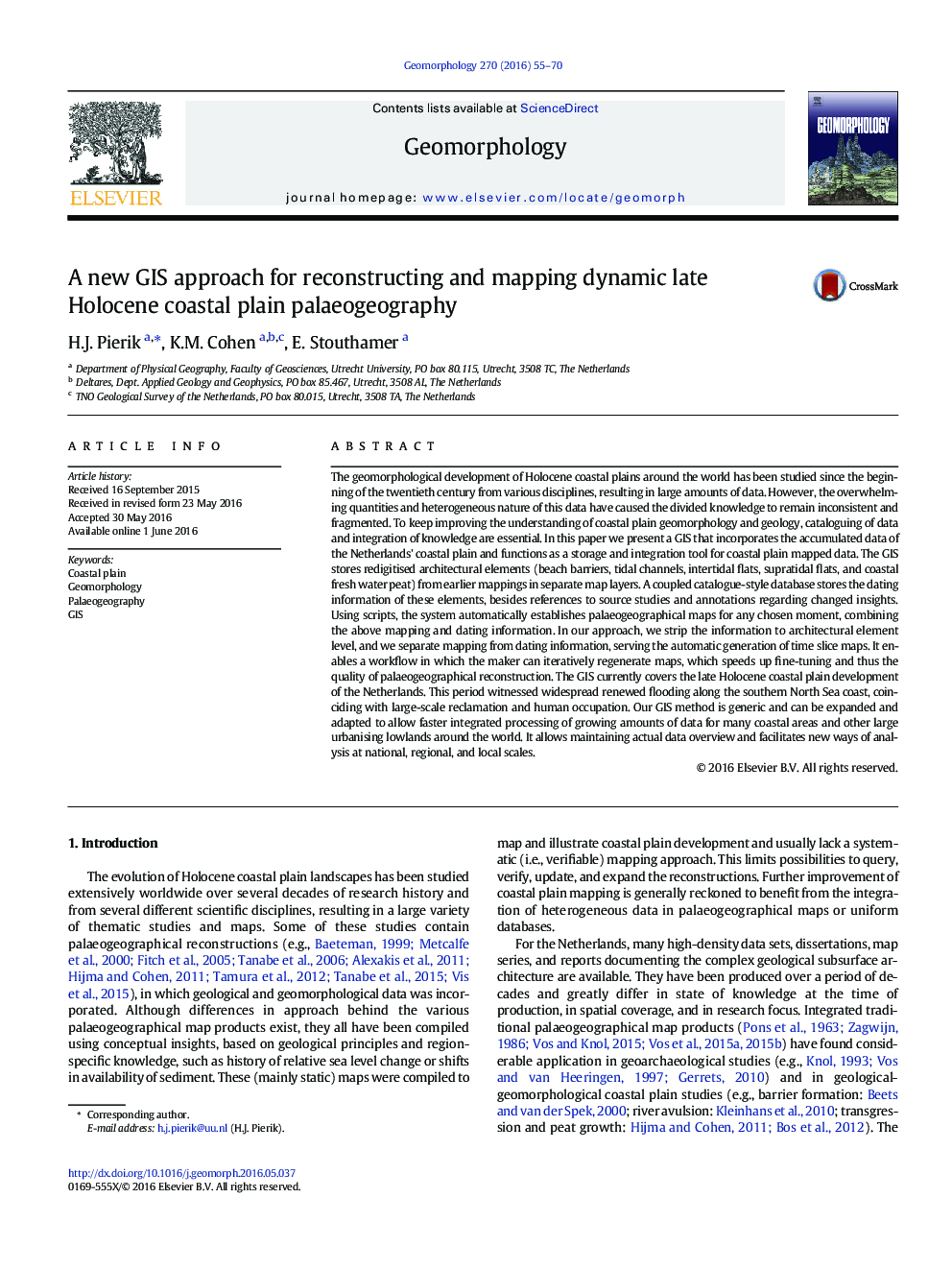| کد مقاله | کد نشریه | سال انتشار | مقاله انگلیسی | نسخه تمام متن |
|---|---|---|---|---|
| 4683894 | 1635379 | 2016 | 16 صفحه PDF | دانلود رایگان |
• We connect GIS design for coastal plain mapping with the architectural element approach.
• Scripted map creation helps the researcher to optimize palaeogeographical reconstructions.
• Contents and tools in the GIS enable to integrate geomorphology and landscape archaeology.
The geomorphological development of Holocene coastal plains around the world has been studied since the beginning of the twentieth century from various disciplines, resulting in large amounts of data. However, the overwhelming quantities and heterogeneous nature of this data have caused the divided knowledge to remain inconsistent and fragmented. To keep improving the understanding of coastal plain geomorphology and geology, cataloguing of data and integration of knowledge are essential. In this paper we present a GIS that incorporates the accumulated data of the Netherlands' coastal plain and functions as a storage and integration tool for coastal plain mapped data. The GIS stores redigitised architectural elements (beach barriers, tidal channels, intertidal flats, supratidal flats, and coastal fresh water peat) from earlier mappings in separate map layers. A coupled catalogue-style database stores the dating information of these elements, besides references to source studies and annotations regarding changed insights. Using scripts, the system automatically establishes palaeogeographical maps for any chosen moment, combining the above mapping and dating information. In our approach, we strip the information to architectural element level, and we separate mapping from dating information, serving the automatic generation of time slice maps. It enables a workflow in which the maker can iteratively regenerate maps, which speeds up fine-tuning and thus the quality of palaeogeographical reconstruction. The GIS currently covers the late Holocene coastal plain development of the Netherlands. This period witnessed widespread renewed flooding along the southern North Sea coast, coinciding with large-scale reclamation and human occupation. Our GIS method is generic and can be expanded and adapted to allow faster integrated processing of growing amounts of data for many coastal areas and other large urbanising lowlands around the world. It allows maintaining actual data overview and facilitates new ways of analysis at national, regional, and local scales.
Journal: Geomorphology - Volume 270, 1 October 2016, Pages 55–70
